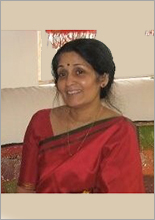Public Private Partnerships in Education in the Arab World: Experiments and Modalities – Part I
Public Private Partnerships (PPPs) have helped to create an alternate source of funding for projects in the education sector and have allowed for a greater flow of technical assistance to the Arab region. PPPs in the education sector present a unique set of challenges and are heavily dependent on political support. As a rule, “PPPS require greater interdependence between government, which pay for the infrastructure projects involved, and the private sector, which delivers and manages them. PPPs for education infrastructure require a thorough preparation and assessment of facilities—including consideration of factors such as demographics, innovation in teaching, and technology changes—that ultimately creates a user-friendly environment for learning and development.”[1]
Reports from the IFC indicate that the PPP market in the education sector[2] was globally most active from 2007 to 2010, recording the highest level of investments in education. Interestingly, it is worth noting that the volumes of PPP investment in 2009 and 2010 were bolstered by two multibillion-dollar projects in the United Arab Emirates and Belgium. PPPs with the highest capital investment values in schools, and included the Zayed University in the United Arab Emirates (PPP value $1.2 billion) and the Flemish Schools PPP in Belgium (PPP value $2.8 billion).
PPPs in the sector may use a number of modalities for financing. Education projects in Egypt, Saudi Arabia, and UAE have been financed primarily with the use of debt through project finance structures. Commercial banks have lent the bulk of the capital costs required for the construction of projects—usually around 80 percent of project costs. Governments have found this to be a preferable method to fund construction and modernization for quick and efficient delivery of educational facilities.
With the help of an enabling environment and prioritizing investments in the education infrastructure in tougher economic times, these governments hope to ultimately increase enrollment in schools. Governments also hope to create jobs for education professionals, while getting a head start on fulfilling their economies’ future skills requirements.
At the lowest level, PPPs can be established with the execution of Public Private Partnership Alliances, between governments, NGOs, philanthropic agencies, and the private sector. More sophisticated PPP mechanisms include complex financial structures and debt. In the Arab world, PPPs in the education sector for Technical Vocational Education and Training (TVET) were begun as early as 2003. Both the Mubarak-Kohl-Initiative and the National Skills Standard Project (NSSP) in Cairo, Egypt were at that time considered best practice examples on TVET[3]. The Mubarak-Kohl Initiative applied a customized version of the German Dual System. The German Dual System in vocational education pairs hands-on-learning with classroom learning to give young people a leg up in the workforce. This allows students to graduate with a degree, job experience and deep knowledge of their trades. The Mubarak-Kohl-Initiative involved the business community in planning, implementing, evaluating and accrediting TVET in Egypt. The Egyptian National Skill Standards Project (NSSP) worked in partnership with employers’ organizations on the development of a national skill standards scheme, job descriptions, curricula, learning material, testing and accreditation requirements.
In the second part of this blog we will explore how Egypt and Qatar led the way in educational PPPs and how their example might serve others to follow suit.
Read Part II
[1] IFC Handshake, PPPs in the Education Sector, January 2013,
[2] Ibid
[3] PPPs in the Arab States http://www.unevoc.unesco.org/go.php?q=Public%20Private%20Partnership%20in%20the%20Arab%20States
Rema Nair Balasundaram is a professional in the area of education in Asia and Africa. She has worked extensively, leading operational teams, in the education sector for the World Bank, UNDP, ADB and the IFC. She has led delegations and task forces for technical assistance in Asia and Africa, focusing on primary education, secondary education and tertiary education over the years. She has also led operations and evaluations of Joint, Global and Regional Programs in the Education sector in Asia and Africa. She has graduate degrees in Development management, and Food Science and Nutrition, and a major in Public and Economic Policy.
